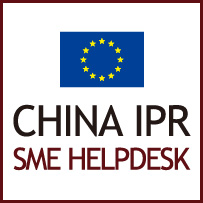 In this article, the China IPR SME Helpdesk return to the topic of protecting IP when seeking Chinese manufacturers as partners. They address what it takes to design a non-use, non-disclosure and non-circumvention (NNN) agreement that can pose enough of a credible threat to dissuade contract violations. The first part of this article appeared in the March/April issue of EURObiz.
In this article, the China IPR SME Helpdesk return to the topic of protecting IP when seeking Chinese manufacturers as partners. They address what it takes to design a non-use, non-disclosure and non-circumvention (NNN) agreement that can pose enough of a credible threat to dissuade contract violations. The first part of this article appeared in the March/April issue of EURObiz.
Defining protected information: keeping everyone on the same page
Non-use, non-disclosure and non-circumvention (NNN) agreements should clearly define which rights are being disclosed or licensed, their nature and their scope. Clear mechanisms for identifying and marking, accounting for and maintaining secrecy for this information—or indications of who will bear these responsibilities, what general types of information should be considered confidential, or processes for retroactively marking material as confidential—should be included. If desired, additional clauses can also outline what types of information will not be considered confidential. Naturally, before this information can be identified, an SME should first understand just what its trade secrets are. Conducting an IP assessment and audit can identify key IP that has otherwise been taken for granted or not fully appreciated by the SME and can assign it a value. This makes calculating contract damages much easier.
While the contract is in force these rules should be strictly followed. Over the course of the contract, additional IP may be generated as a result of the work of employees or independent innovations on the part of the manufacturer. These agreements can also include clauses which dictate that all such IP belongs to the SME, thereby avoiding future disputes. Note, however, that China places restrictions on the export of some technology, meaning that agreements automatically granting new IP to the SME could be struck down in court.
Validity, monitoring, and termination: building in safeguards
With IP clearly identified, the next step is protecting it. Language allowing regular monitoring of the manufacturer’s activities by SMEs can prevent unauthorised use of the licensed rights. These clauses usually identify the parties who will have permission to use the licensed rights, as well as the security procedures that are in place to prevent unauthorised use or misuse of the IP assets. Assignment or transfer clauses prevent your IPR from being transferred to third parties without your permission. For example, clauses can be included to restrict and prohibit the contract from being assigned and transferred without your express written authorisation, and you may add a further clause to bind all successive transferees and assignees to your agreement.
It is also necessary to specify when and under what conditions the agreement will terminate, e.g., upon the liquidation or dissolution of one party. Agreements without clear explanations of when they terminate can be considered terminable at will. In the case of trade secrets, it is key to clarify that manufacturers will be bound by the agreement and liable for damages by nature of their accession to the agreement, independent of whether the trade secrets lose their trade secret status. That is to say, it should be clear that Chinese manufacturers are bound by your contract because they signed the contract, not just because your IP is protected. This is an added layer of protection which ensures that even if manufacturers manage to wiggle around non-disclosure clauses, they will still be restricted from capitalising on an SME’s IP. Hand-in-hand with termination clauses are clauses addressing challenges to validity. These clauses are key for ensuring that even if one or more of the licensed rights in the licence agreement expires, the validity of the entire agreement and the licence granted within that agreement may not be challenged.
SMEs should seek professional legal advice when drafting clauses related to termination of agreements and non-competition, as excessive non-competition periods can be struck down by Chinese courts.
Dispute resolution: tailoring your tools for China
Including dispute resolution mechanisms in agreements signed early on with manufacturers may seem to be rude or an expression of mistrust, but in truth are an indispensable part of any NNN agreement and are included in such agreements by any responsible lawyer. Clarifying dispute resolution can prevent bad blood by creating a mutually agreeable framework for working through issues which crop up. More importantly, crafting dispute resolution clauses that are effective in dealing with Chinese manufacturers in Chinese jurisdictions can give China’s judiciary all it needs to ensure contract compliance.
Effective dispute resolution mechanisms for NNN agreements with Chinese manufacturers are built on three pillars:
- Official adoption of Chinese as the language for the NNN agreement.
- Identification of Chinese authorities as the only acceptable judicial authorities for deciding cases related to infringement of the contracts.
- Language which favours liquidated damages.
The Chinese-language version of your NNN agreement should be adopted as the official version of the agreement and the version that will be used to resolve any disputes. Though it may seem counterintuitive, this stipulation can greatly augment IP protection. As long as the version is prepared by trustworthy legal counsel with adequate Chinese skills, it can be relied on to accurately reflect the SME’s wishes. An English translation of the contract should be provided to the SME to ensure that the contract is acceptable. The greatest value of writing contracts in Chinese is that doing so creates tighter obligations on the Chinese manufacturer. With a Chinese-language contract, the manufacturer cannot argue that wording was unclear or deceptive. Furthermore, with a Chinese-language contract, Chinese courts will not have a chance to use their own translators (and their concomitant, widely varying grasp of English) to misrepresent the contract.
 Additionally, contracts must stipulate that disputes will be resolved within China. Chinese courts do not respect foreign decisions and will likely not hear cases for contracts which state that the only acceptable jurisdiction for dispute resolution is somewhere in Europe. Making contracts governed by Chinese law and enforceable only in Chinese courts is critical for getting their attention. Besides, most manufacturers simply will not have enough assets outside of China to allow SMEs to recoup their losses. SMEs using Chinese courts in first-tier cities in particular will likely be pleasantly surprised by the speed and efficacy of the Chinese legal system in governing affairs regarding foreign corporations, particularly if they make use of specialised courts such as Beijing’s IP court.
Additionally, contracts must stipulate that disputes will be resolved within China. Chinese courts do not respect foreign decisions and will likely not hear cases for contracts which state that the only acceptable jurisdiction for dispute resolution is somewhere in Europe. Making contracts governed by Chinese law and enforceable only in Chinese courts is critical for getting their attention. Besides, most manufacturers simply will not have enough assets outside of China to allow SMEs to recoup their losses. SMEs using Chinese courts in first-tier cities in particular will likely be pleasantly surprised by the speed and efficacy of the Chinese legal system in governing affairs regarding foreign corporations, particularly if they make use of specialised courts such as Beijing’s IP court.
Finally, contracts should call for court decisions and liquidated damages.
Damages and injunctions in Chinese law
Damages and injunctions are a key part of ensuring that NNN agreements have the legal force needed to ensure compliance. Unlike common law or some other legal systems, Chinese courts do not disfavour liquidated damages. Contract damages are common in China and including them in your NNN will ensure that manufacturers face a very real threat of heavy fines. Manufacturers will also face the reality of seizure and auctioning of their equipment or freezing of their assets should they fail to pay these fines. For these reasons, liquidated damages are very effective in China. Immediately putting a figure on the damages to be paid can also avoid hassles related to calculating damages for IP infringement in Chinese courts, which can be a tricky process.
An alternative to liquidated damages is arbitration, which can often be a quick and cost-effective means of settling disputes. If possible, contracts should stipulate the means of arbitrating disputes ahead of time to ensure that the process is as smooth as possible.
Contract provisions to avoid
A contract may be void in whole or in part if it contains any provisions in contravention of Chinese law or administrative regulations. Set forth below are examples of IP provisions which SMEs should avoid in China, particularly in technology and employment contracts, because they may well be in contravention of Chinese law. When dealing with manufacturers, some provisions to avoid include those that:
- prohibit a licensee from making improvements to the licensed technology and using the improvements;
- restrain a licensee from obtaining from other parties’ technology similar to, or competing with, the licensed technology; and
- prohibit a licensee from challenging the validity of the IPR of the licensed technology or from attaching additional conditions to such a challenge.
 The China IPR SME Helpdesk supports small and medium sized enterprises (SMEs) from European Union (EU) member states to protect and enforce their Intellectual Property Rights (IPR) in or relating to China, Hong Kong, Macao and Taiwan, through the provision of free information and services. The Helpdesk provides jargon-free, first-line, confidential advice on intellectual property and related issues, along with training events, materials and online resources. Individual SMEs and SME intermediaries can submit their IPR queries via email (question@china-iprhelpdesk.eu) and gain access to a panel of experts, in order to receive free and confidential first-line advice within 3 working days.
The China IPR SME Helpdesk supports small and medium sized enterprises (SMEs) from European Union (EU) member states to protect and enforce their Intellectual Property Rights (IPR) in or relating to China, Hong Kong, Macao and Taiwan, through the provision of free information and services. The Helpdesk provides jargon-free, first-line, confidential advice on intellectual property and related issues, along with training events, materials and online resources. Individual SMEs and SME intermediaries can submit their IPR queries via email (question@china-iprhelpdesk.eu) and gain access to a panel of experts, in order to receive free and confidential first-line advice within 3 working days.
The China IPR SME Helpdesk is co-funded by the European Union. To learn more about the China IPR SME Helpdesk and any aspect of intellectual property rights in China, please visit our online portal at http://www.ipr-hub.eu/.


Recent Comments